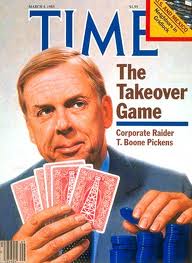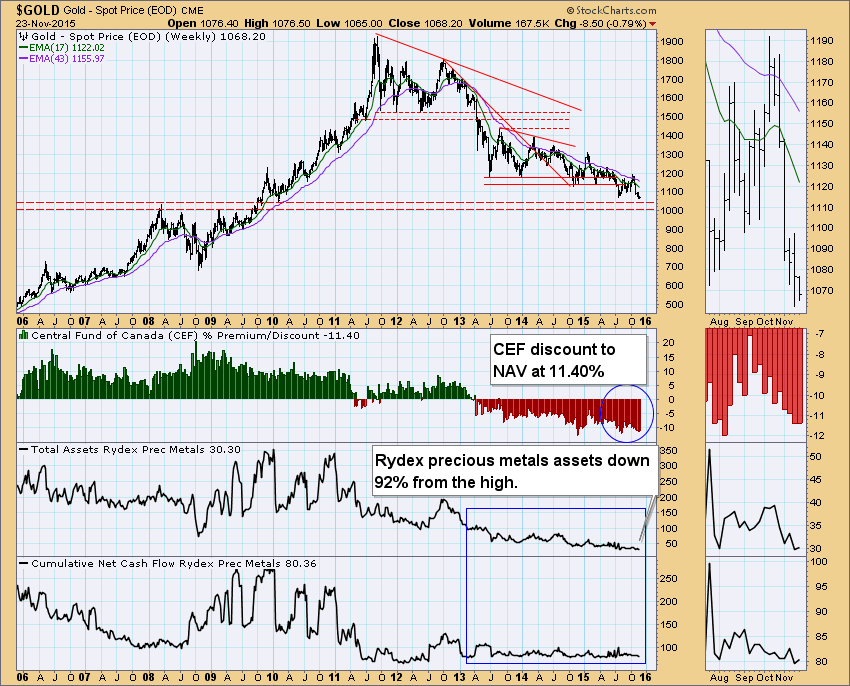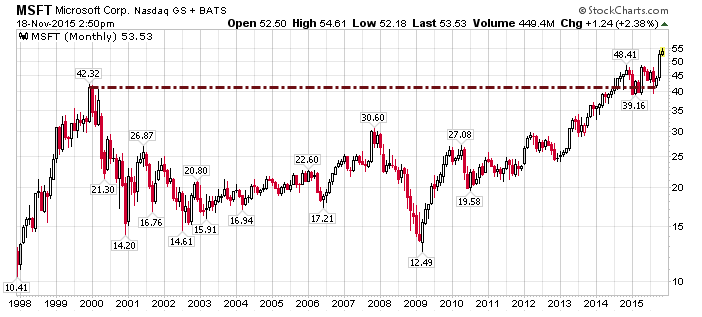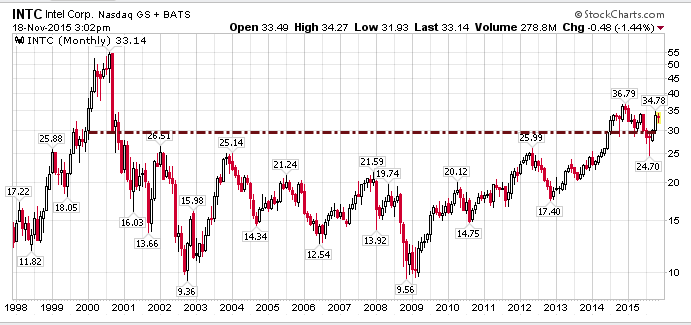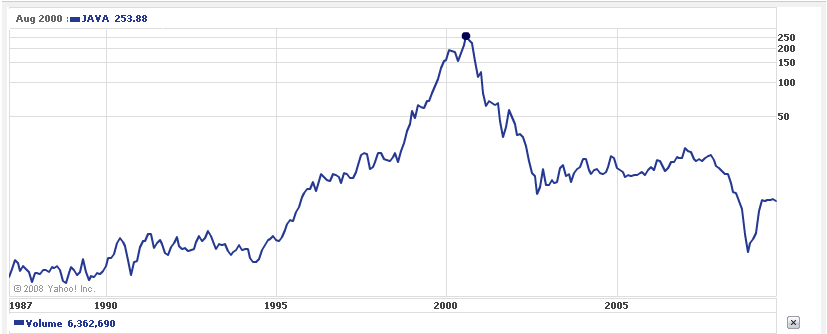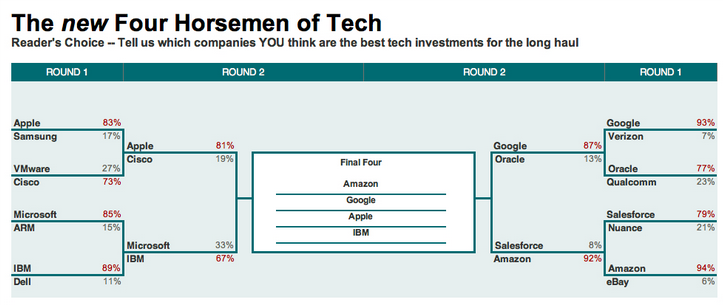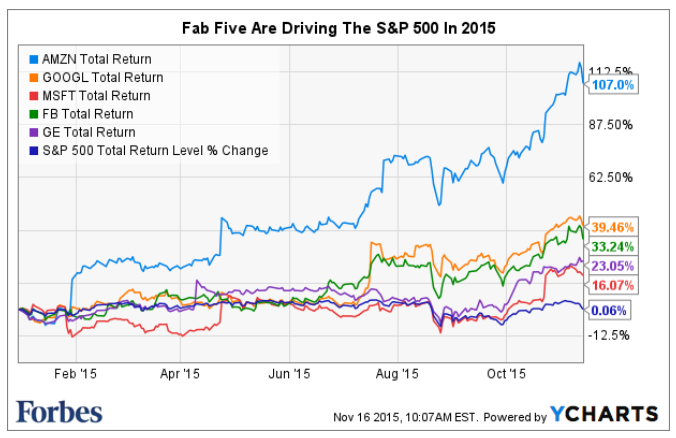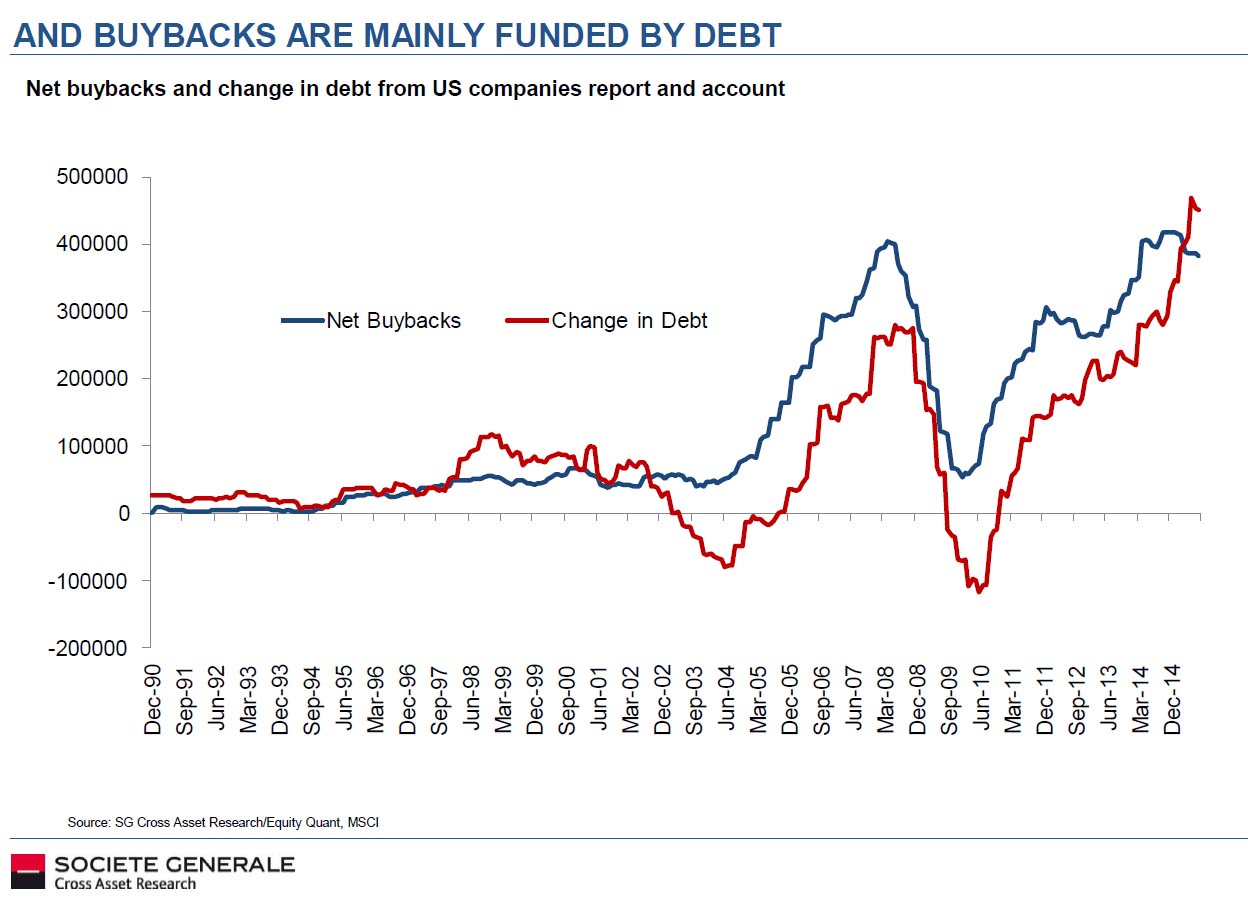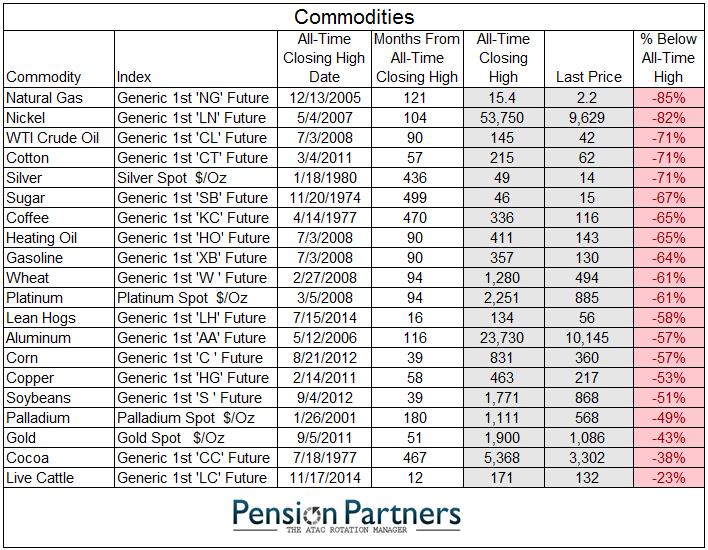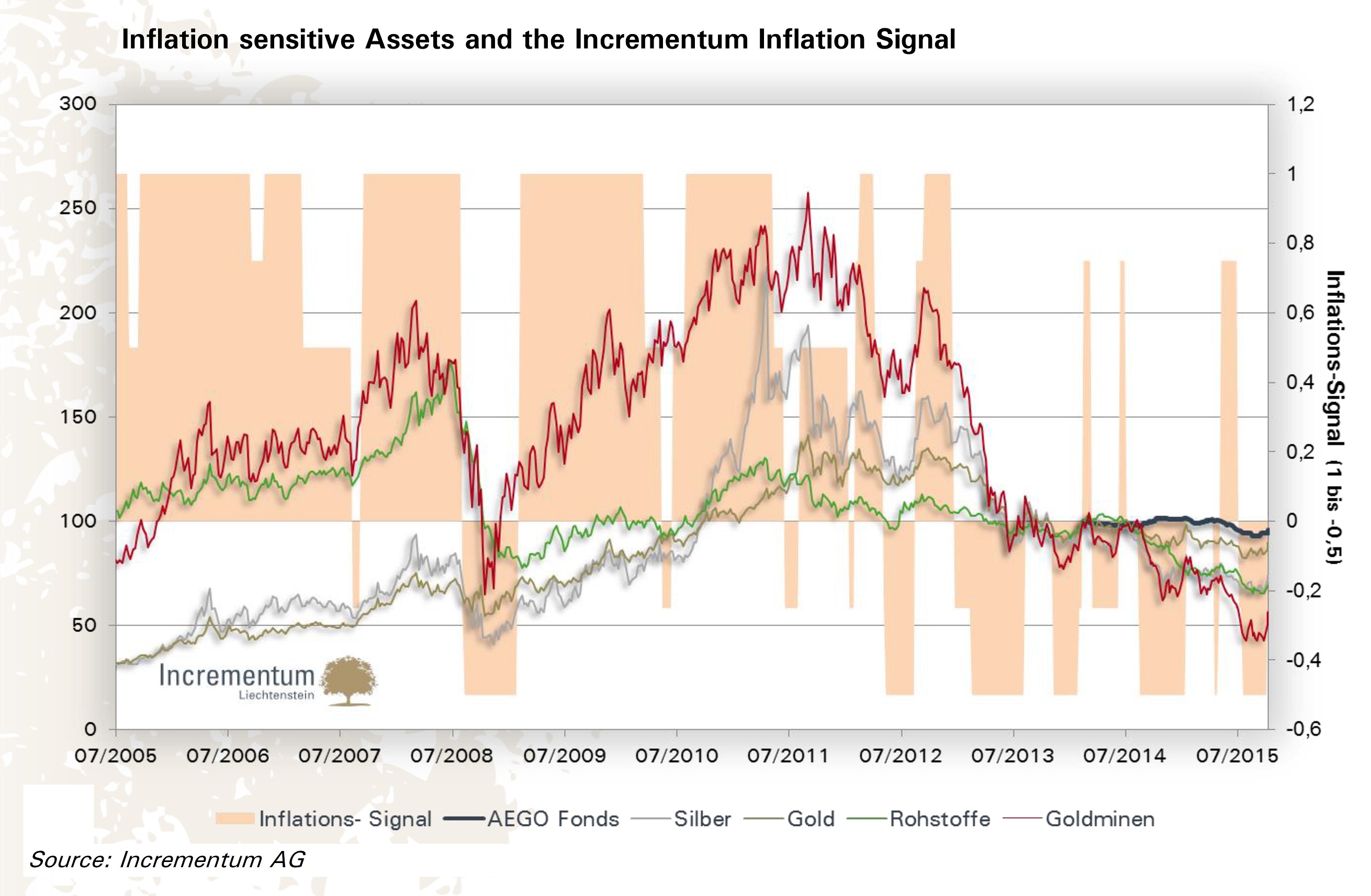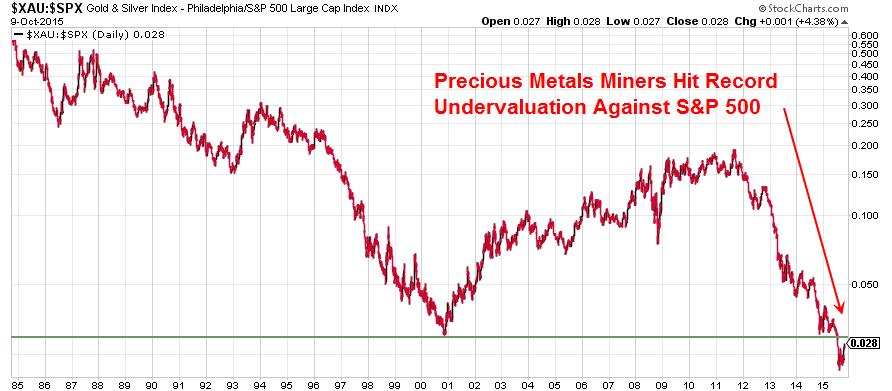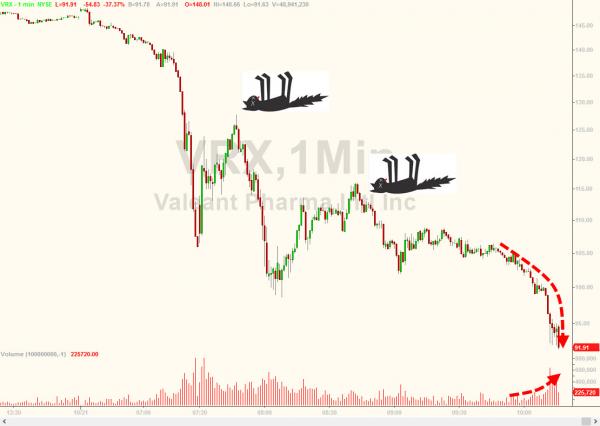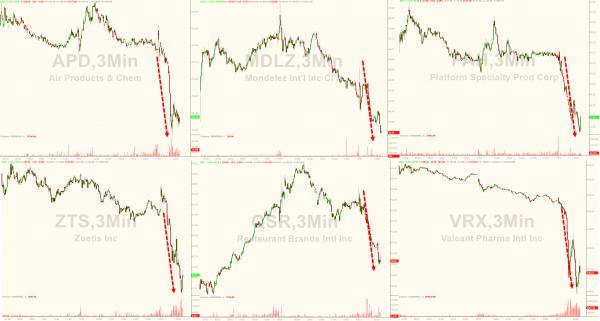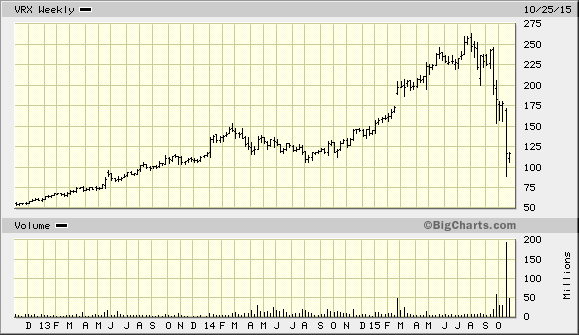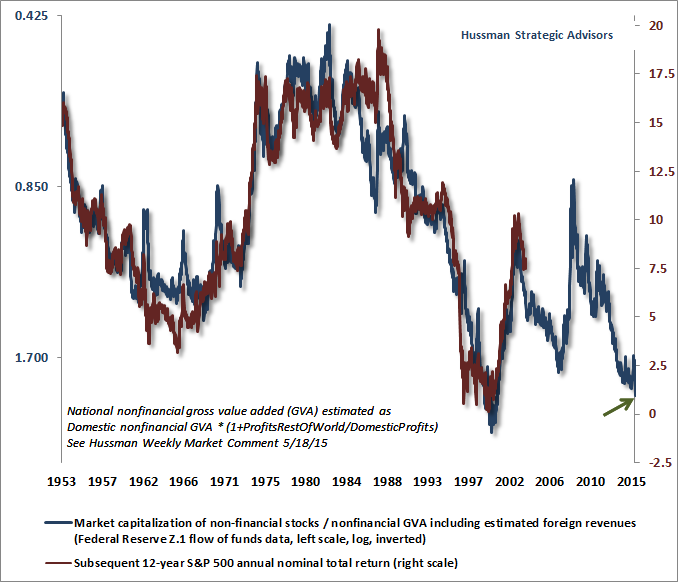subscription
Categories
Do you want the keys to the Value Vault?
Simply send an email to aldridge56@aol.comTag Cloud
AAPL ABCT Ackman Austrian Economics bitcoin Blogs books Bubbles Buffett business Case Study Competition Demystified Contrarian Cuba Deep Value Economies of Scale economy Federal Reserve Franchises Gold Gold Stocks Graham Greenwald History inflation James Grant Klarman Learning Lectures miners Mises money Munger Politics Risk ROIC Rothbard Strategic Logic Strategy The Fed valuation Value Investing Resources Value Vault Videos WMT-
Recent Posts
Gold Stocks: No One Left to Kill?
An Interesting Juncture for Gold Stocks (A good read with links)
Note that CEF in the above chart trades at an 11% discount to its 60%/40% holding of gold and silver bullion after a four year down-trend–note that this is either hyper-bearishness or massive extrapolation of trend-following. Apple’s cash hoard could buy the entire public mining sector. Gold stocks are cheap for a reason: poor capital allocation, poor cost control, and dilution of shareholders revealed in the five-year long bust from an epic boom from 2001 to 2011 caused investors to flee. Since then many managements have gained religion on cost control and capital discipline (Note Barrick, ABX). All cycles turn, but when? If we knew, then no opportunity.
I always hear investors or analysts ask, “So what is the catalyst?” If the market is at all efficient–and I would say that it is except at major inflection points–then if we knew the catalyst, then the opportunity would be arbitraged away. How about the law of low prices or the law of supply and demand.
Ironically, as gold has declined in US dollar terms, it has risen in real terms versus commodities showing its mettle in a credit contraction. TSI BLOG
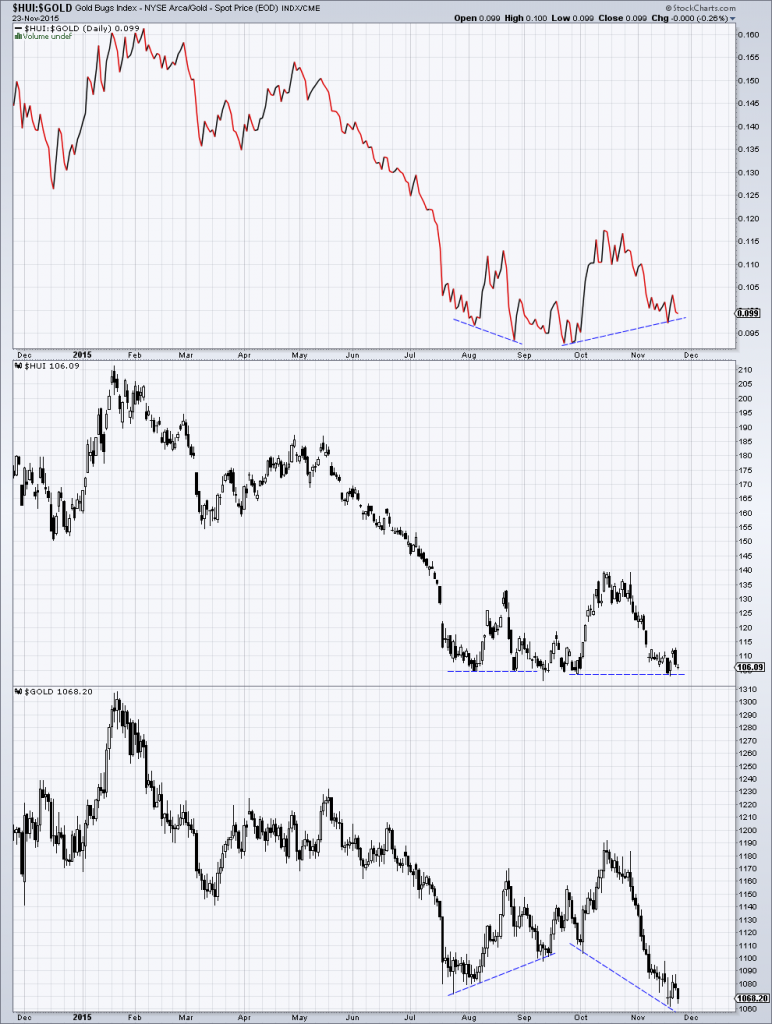 The HUI, a gold stock index, is showing relative strength versus gold. However, certain gold stocks like Novagold (NG), Sabina Gold (SGSVF) or Agnico-Eagle (AEM) are in incipient uptrends or, at least, vastly outperforming their indexes such as GDX or GDXJ. You must diversify amongst the highest quality producers, developers, and explorers.
The HUI, a gold stock index, is showing relative strength versus gold. However, certain gold stocks like Novagold (NG), Sabina Gold (SGSVF) or Agnico-Eagle (AEM) are in incipient uptrends or, at least, vastly outperforming their indexes such as GDX or GDXJ. You must diversify amongst the highest quality producers, developers, and explorers.
This post is not a recommendation but a historical reference point for a hated asset class. I see much less RISK in a terrible industry such as gold mining than wonderful businesses such as Amazon, CRM, or GE.
Avoiding the Death Zone–the Four Horsemen and the Nifty-Fifty
Climbers say that when you are over 24,000 feet, you enter the “Death Zone. Mistakes become lethal.
The death zone is the name used by mountain climbers for high altitude where there is not enough oxygen for humans to breathe. This is usually above 8,000 metres (26,247 feet).[1] Most of the 200+ climbers who have died on Mount Everest have died in the death zone.[1] Due to the inverse relationship of air pressure to altitude, at the top of Mount Everest the average person takes in about 30% of the oxygen in the air that he or she would take in at sea level; a human used to breathing air at sea level could only be there for a few minutes before they became unconscious.[1] Most climbers have to carry oxygen bottles to be able to reach the top. Visitors become weak and have inability to think straight and struggle making decisions, especially under stress. WIKI
So what does this have to do with investing? When you pay too much for growth or quality, you may never recover. VALUATIONS MATTER ALWAYS!
First review the Nifty-Fifty Era when fifty stocks were “must own” for institutions in the 1970s due to their growth and quality. Money managers herded into them similar to this: Money Managers Herding Video.
valuing-growth-stocks-revisiting-the-nifty-fifty (Note page 22, you as an investor would have eventually broke even, but almost no one would have been able to seat through the 1980’s UNDER-PERFORMING a declining stock market!
Nifty Fifty Ignore the second half of these notes.
Now think about how the pattern repeated in the Internet years of 1996 to 2000 when MSFT and INTC were the must own stocks of their era.
Congratulations! If you bought back in 1999/2000 when the press was lauding these “must own” stock for the future, you are now in the black.
Even if you pay too much for stable, high quality companies, you can lose even as the companies grow sales, cash flows and earnings year after year after year. Note: KO_VL_Jan 2013 (See P/E ratio as a proxy for investor enthusiasm and compare to financial metrics). What is not to like? So why did the price go sideways for almost a decade after 1998? Investors adjusted their expectations.
Sun MicroSystems Case Study
One thing to never forget is that the market is mostly efficient but not ALWAYS efficient or correct. 2 plus 2 equals 4 not 10. The last Internet frenzy gives a perfect case study in Sun Microsystems (SUN).
Sun Microsystems has always intrigued me. For a number of years, it seemed as if the company could do no wrong. During the early 1990′s, Sun occupied the top position in high performance computer workstations, a category of computing that has since virtually disappeared thanks to advances in PC hardware. Despite desperate attempts to unseat it from its leadership position by worthy competitors like HP, DEC, and IBM, Sun was able to prevail.
If you had purchased Sun stock in May of 1994, you’d have seen it skyrocket to nearly 100 times its value by August of 2000, just 6 years later. Had you kept it at the historical high price of $253/share, you’d have seen your investment lose more than 98% of its value when it came back down to just $3.17 a share by October 2008.
SUNW/JAVA stock price meteoric 100x rise and fall
It is easy to pull out a historical chart and say, “Look at the bubble popping.” But note what the CEO had to say about the price of his company’s stock in 2002:
Q: Sun’s stock hit a high of $64 or adjusted in the chart above of $250. Did you think what tech stocks were doing two years ago was too good to be true? (Date of the interview was March 2002).
A: No, she trained me well, and the stock made a nice move since we got married. But two years ago (2000) we were selling at 10 times revenues when we were at $64. At 10 times revenues, to give you a 10-year payback, I have to pay you 100% of revenues for 10 straight years in dividends. That assumes I can get that by my shareholders. That assumes I have zero cost of goods sold, which is very hard for a computer company. That assumes zero expenses, which is really hard with 39,000 employees. That assumes I pay no taxes, which is very hard. And that assumes you pay no taxes on your dividends, which is kind of illegal. And that assumes with zero R&D for the next 10 years, I can maintain the current revenue run rate. Now, having done that, would any of you like to buy my stock at $64? Do you realize how ridiculous those basic assumptions are? You don’t need any transparency. You don’t need any footnotes. What were you thinking?
Now, the same music is playing but the players have changed.

Are now driving the performance of the general stock indexes:
The Fab Five are “NEED TO OWN” stocks for money managers who wish to NOT underperform in the short-term.
- AMZN VL
- Goog_VL
- FB_VL
- MSFT VL
- GE_VL certainly the the financial metrics, growth, and rising stocks prices make these easy “one-decision” stocks.
Let’s take AMZN because this company has a dominant position in retail that seems to be growing.
Amazon Key Stats
- Trailing PE: 950.63
- Forward PE: 117.65
- Market Cap: $311.04 billion
- Book Value: $26.50 per share
- Share Price: $663.54
- Price/Book: 24.27
Read more at How Amazons Long Game Yielded a Retail Juggernaut. Can’t you see many Americans becoming addicted to Amazon’s Prime service? Poor Wal-Mart and other retailers. However, IF AMZN doubles in market cap over the next 10yrs or a 7% annual return, and ends up trading at 21.9x earnings (current SPX p/e) in 2025, it needs to grow net income 55%/yr! Since 1973, 0.28% of companies have grown earnings at 55% for 10 years (Source: O’Shaughnessy). Do you like those odds? Or are you so smart that you can tell that AMZN will win the lottery?
While valuation augur for CAUTION for stocks IN GENERAL:
The Bubble Right in Front of Our Faces
A MUST-READ ARTICLE: The Nifty Fifty Becomes the Feb Five
Because when you enter the death zone you need to remember:
Have a great weekend and Thanksgiving for those in the USA! How is your analysis of Valeant progressing? I hear crickets.
Update: The top 10 stocks in the S&P 500 are +13.9%. The other 490 are -5.8%. Largest spread since the late 1990s. Can you hear the bells ringing?
How Momentum Investing Works–A Parable
A few years ago Larry approached his Guadalajara neighbours and announced that he would buy monkeys for $10 each. The neighbours, seeing that there were many monkeys around, went out to the forest and started catching them. Larry bought thousands at $10 and, as supply started to diminish, the neighbours stopped their effort. He next announced that he would now buy monkeys at $20 each. This renewed the efforts of his neighbours and they started catching monkeys again. Soon the supply diminished even further and people started going back to their farms. The offer increased to $25 each and the supply of monkeys became so scarce it was an effort to even find a monkey, let alone catch it!
Larry now announced that he would buy monkeys at $50 each! However, since he had to go into town on some business, Darren, his son, would buy on his behalf. In the absence of Larry, Darren told the neighbours: “Look at all these monkeys in the big cage that my dad has already collected. I will sell them to you at $35 and when Dad returns from the city, you can sell them to him for $50 each.” The villagers rounded up all their savings and bought all the monkeys. They never saw Larry or Darren again, only lots and lots of monkeys! Now you have a better understanding of how the stock market works.
Find Your Purpose
If you don’t know who you are, the market is a very expensive place to find out. – The Two-Penny Philosopher
Find Your Purpose (Podcast)
More stories: http://www.jocrf.org/news
Worth Reading http://thefelderreport.com/blog/ Best blogs and info sources.
Posted in YOU
Research on a Cyclical Business; The bubble in front of our faces
Repeat after me: All markets are cyclical, all markets are cyclical, all markets are cyclical.
A good example of research for a simple, cyclical business
JAC_Simple Digressions Oct 25 2015 46 cents ENERGOLD
More here: http://prostedywagacje.blogspot.com/2015/10/impact-silver-cheap-stocks-but.html
Perspective on the mining market and gold: Van Eck Joe Foster Gold-Public-Monthly-Commentary-2015-10
And be careful, The Bubble in front of our faces………http://hussmanfunds.com/wmc/wmc151116.htm
The Valeant Saga, Part III; Master Class in Deep Value Investing by Icahn
Part II on Valeant Let’s pretend you are asked to evaluate the situation for Mr. Ackman. He is in deep #$%^& and has brought in fresh eyes to advise him. Pershing Square has had to install two hotlines–Hotline 1: for investor suicide calls and Hotline 2: for investors who wish to phone-in death threats.
All bad joking aside, you have a huge pile of information to present the critical issues. Do you advise Mr. Ackman to buy more, sell immediately, sell down to a “more reasonable amount,” or hold? Use reason not opinion or emotion to guide you.
Step back and ask what are the important issues? What is Valeant worth? Can you know that? Pretend you are an investigative journalist trying to uncover the story.
You can start here with company documents:
- Valeant 2014 Annual Report
- 10-26-15-Investor-presentation-Final4
- 10-26-15-Investor-presentation-Final4 Q3-2015-Earnings-Deck-10-11-2015-Final
What does Valeant do? Does Valeant have assets or a business method that gives the company a higher sustainable return on capital? What roll-ups/acquisition firms have been very successful in the past and how was success achieved?
Then you can read all the rumours and commentary swirling around Valeant, but be quick to focus on what you determine to be important. There are several links in the documents for you to follow further.
- Ackman plays defense
- VRX Liquidation Value
- Valuing Valeant
- Hubris Cubed the Valeant Story
- VRX Next Shoe to Drop
- How VRX got vaporized Stockman Corner
- The stock that ate Wall Street
- Letter to Clients and Shareholders-1 by Sequoio Oct 2015
- investor-presentation-may-27-2014-1 on VRX
- Valeant-Part-II-final-b
If anyone has other information to share please post in the comment section.
Also follow the links to the prior posts on Valeant to read the comment sections.
In a week, we will go through this exercise. Now YOU have the chance to do the work.
Good luck and have a great weekend!
Excellent Video of Carl Icahn below.
http://greenbackd.com/2015/11/05/icahns-masterclass-on-deep-value-and-activism/
The Ongoing Saga of Valeant Part II
- Bronte Capitals Comments on Valeant Conference Call The Bronte posts will give you a thorough background on the controversies surrounding Valeant and Philidor.
- Valeant and its captive pharmacies-Bronte Capital
- Simple Proof that Philidor has shipped drugs where not licensed
A torrent of SeekingAlpha articles:
You can follow the reactions of investors and analysts at Seeking Alpha.
Hedge Fund Herding The psychological aspects of following others and the pressures of the short-term performance derby. Lesson: Never cease to do YOUR own thinking and analysis.
Ackman down 16% and will hold CC on Valeant this Friday (Oct . 30th) Below are charts of Ackman’s portfolio. The sharks front-run the potential liquidation as Ackman’s investors go queasy.
Link to CC on this Friday at 9 AM EST
Readers should share if they believe there are actionable lessons here for investors in terms of psychology, portfolio management and analysis. Time is precious so we need to learn the important lessons.
My take-away so far.
First, Valeant’s Low Valuation and Rip Roaring Growth (Aug. 20th 2015 by Barrons Note the author’s focus on growth–but IF that growth is not sustainable within a franchise (protected above the cost of capital profit margins) then cause this: changed investor expectations:
And that ladies and gentlemen is called a permanent loss of capital IF investors paid too much for growth in a company doing roll-ups of commodity-like products (generic drugs) at unsustainable retail prices (competition and insurer push-back will cap price gains).
—
Meanwhile, investors face the second most overvalued equity market in history (Source: Hussman Funds).
Posted in Investing Gurus, Investor Psychology, Risk Management, YOU
Tagged Ackman, Blowups, Bronte Capital, Philidor, Valeant
The Stoics and Investing; Volatility and the Prisoner’s Dilemma
The Stoics
Stoics understood that if negative emotions such as anger, envy, greed, fear, and grief plague your life, then soundness and peace of mind will elude you. Serentiy in the midst of adversity–which is hardly the same thing as the modern, Western and secular notion of “happiness”–is a necessary condition of a well-lived life.
nov15_newsletter-1 How the Stoic Philosophers influenced Ben Graham
Volatility
Valeant Case Study in Progress
There is an ongoing battle over Valeant’s (VRX) valuation and business model between short-sellers and investors. This opportunity allows us to improve our analysis skills and understanding of business models. Also, how will Sequoia, an owner of over 20% of Valeant’s equity, handle their portfolio?
My first question is whether Valeant is a franchise with durable competitive advantages or a roll-up of commodity products dressed-up in a fancy industry (Pharma)? We should use this case to learn how experienced analysts present their opposing views.
First: What’s not to like? Valeant has rapid growth with huge profit margins? Of course, the PERFECT investment is a company that has high returns on capital and can constantly redeploy its capital at the same high returns. The classic case would be the early (pre-2000) history of Wal-Mart (WMT) as the high returns generated from its stores could be redeployed into new stores on the borders of their regions which had economies of scale in administration, advertising, and management costs per unit of sales. WMT did not have, for example, advantages in gross margins, but net profit margins. See WMT_50 Year SRC Chart.
What would be the source of Valeant’s high returns and competitive advantages?
Sequoia (a well-known value fund with an excellent long-term record) saw strong competitive advantages. See their recent investor transcript:
Sequoia-Fund-Transcript-2015-August Note the date of the transcript and the questions regarding Valeant concerning Philador and Sequoia’s 20% concentration.
Other investors (Charlie Munger, Citron) disagreed:
April 2, 2015 from www.fool.com
…..Recently, during a shareholders meeting for the Daily Journal Corporation, a newspaper where he serves as Chairman, Munger had this to say about Valeant Pharmaceuticals Intl Inc. (TSX:VRX)(NYSE:VRX): “Valeant is like ITT and Harold Geneen come back to life, only the guy is worse this time.”
What exactly does Munger mean by this?
A little history lesson
Who exactly was Harold Geneen? And what did he do at ITT that’s so infamous?
Geneen took over ITT Corp in 1959 when it was still mostly a telegraph and telephone company. After being blocked by the FCC in an attempt to buy the ABC television network in 1963, Geneen decided to diversify away from the company’s traditional business and completed more than 300 acquisitions during the decade in areas such as hotels, insurance, for-profit education, and the company that made Wonder Bread.
Geneen used cheap debt to finance these acquisitions, which later proved to be the company’s downfall. After Geneen’s retirement as CEO in 1977, subsequent CEOs spent much of the next two decades paying off the debt by selling most of Geneen’s acquisitions.
Is Valeant really comparable?
On the surface, Valeant looks like it could be pretty comparable to ITT. Since merging with Biovail in 2010, Valeant has made more than 30 different acquisitions, most of which were paid for with debt or by issuing shares.
Since the end of 2010, Valeant’s debt has skyrocketed from US$3.6 billion to US$15.3 billion. Shares outstanding have also gone up considerably from 196 million to 335 million. It’s obvious that Munger is onto something.
But on the other hand, I’m not sure Valeant is anywhere close to being as bad as ITT was. For one thing, all of the company’s acquisitions are at least in the same sector. ITT was buying up hotels and car dealerships, while Valeant is buying up pharmaceutical companies. Valeant’s efforts scale up a whole lot better than ITT’s ever did.
There’s also a bit of hypocrisy coming from Munger on this issue. Munger is actively involved in a company that does pretty much the same thing as ITT did back in the 1960s. Sure, Berkshire doesn’t use much debt or engage in hostile takeovers, but Berkshire and ITT have more in common than Munger is willing to admit. Both attempted to dominate the business world using a roll-up acquisition strategy; Buffett and Munger were just a little more patient with their plan.
But just because Munger exaggerates how bad Valeant’s acquisition spree has been doesn’t mean the stock is necessarily a buy at these levels. The company had earnings of just $2.67 per share in 2014, putting the stock at a P/E ratio of nearly 100 times. Yes, earnings are expected to grow substantially in 2015, but the outlook is simple. For the stock to continue performing, the company must continue to make acquisitions.
After making more than 30 acquisitions in just a few years, it’s hard to keep finding deals that will not only be big enough to make a difference, but will also prove to be good long-term buys. There’s so much pressure on management to keep buying that a serious misstep could be coming. If that happens, this hyped stock could head down in a hurry.
Although I don’t buy Munger’s alarmist concerns about Valeant, I agree with him on one thing. The stock just isn’t attractive at current levels.
—
A potential acquisition target, Allergan, Inc., points out its worries over Valeant’s business model. investor-presentation-may-27-2014-1 on VRX
Citron, a short-seller, attacks with a report: Valeant-Part-II-final-b. Valeant is another “Enron.” Use the search box on this blog and type in Enron and follow links to review that case. Enron never showed the profit margins that Valeant is currently showing. NEVER take another person’s statement on faith. Check it out for yourself.
Valeant today (October 26th, 2015) counters Citron and answers investors’ concerns with 10-26-15-Investor-presentation-Final4 Valeant and video presentation: http://ir.valeant.com/investor-relations/Presentations/default.aspxeep.
Ok, so what is Valeant worth? Can you make such an assessment? How do you think Mr. Market will weigh-in? If you owned a 20% stake in Valeant, how would you manage the position? What are the main issues to focus on?
This may be too difficult to analyze for many of us but we have or will have many documents and reports to provide insights. Remember that there are two sides to every narrative. Can we move closer to reality or the “truth”?
Note www.whalewisdom.com and type in VRX. What type of investor owns Valeant? Will momentum investors stick and stay?
Your comments welcome.
Sign up for Whitney Tilson’s emails on investing. Worth a look: leilajt2+investing@gmail.com

